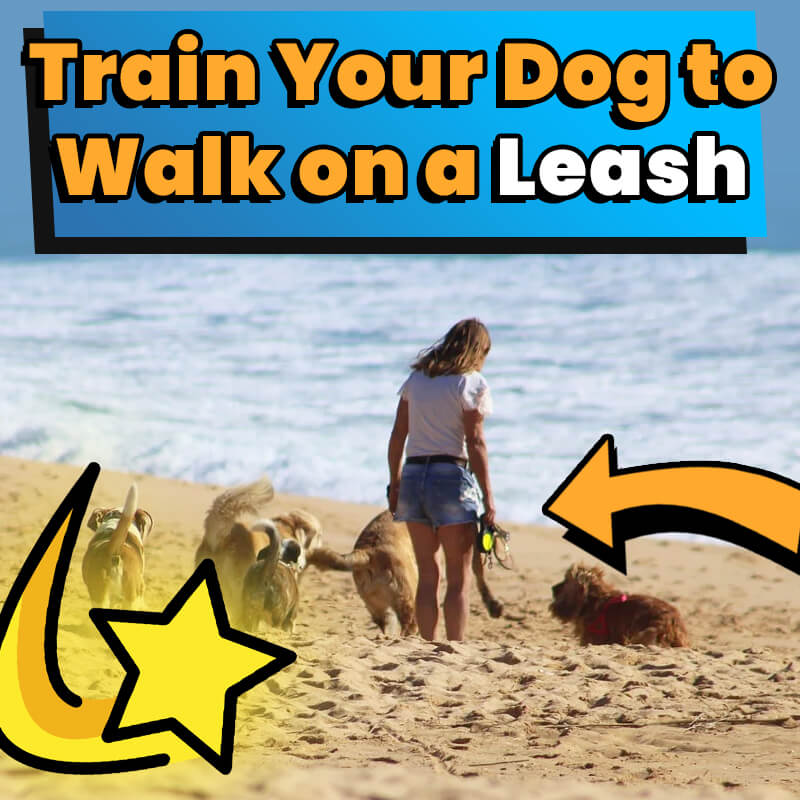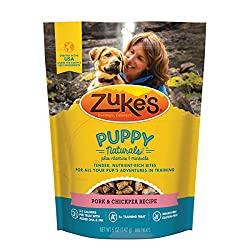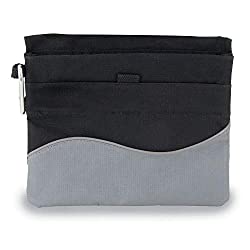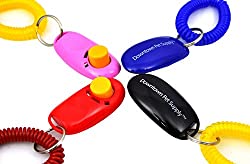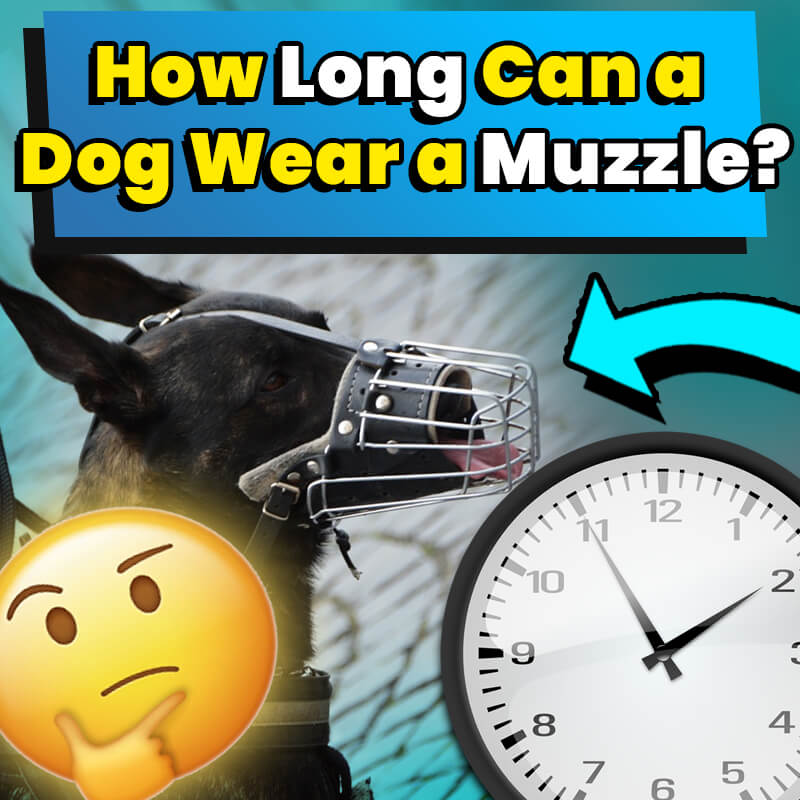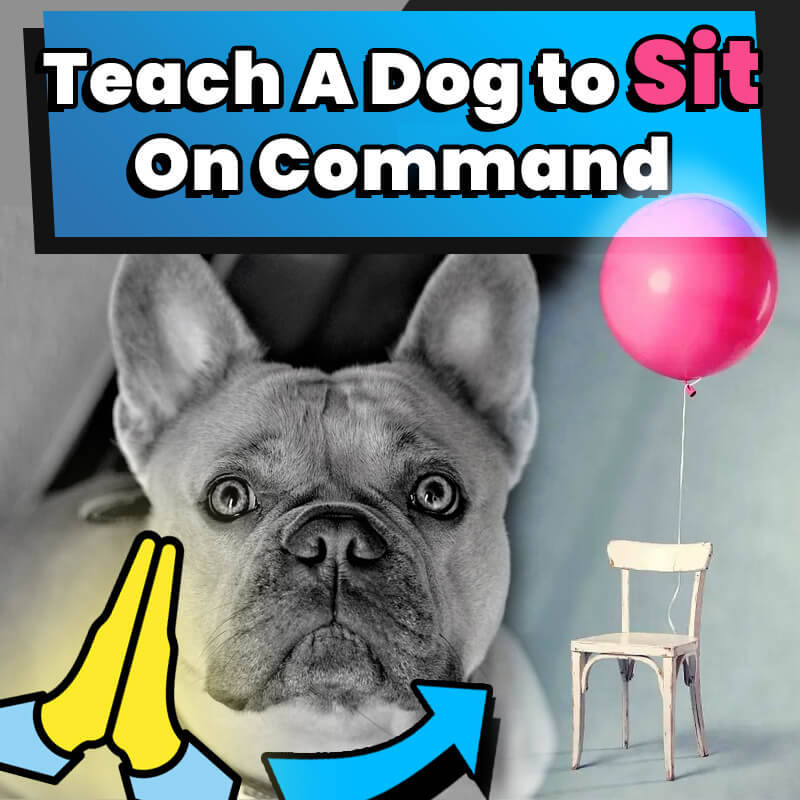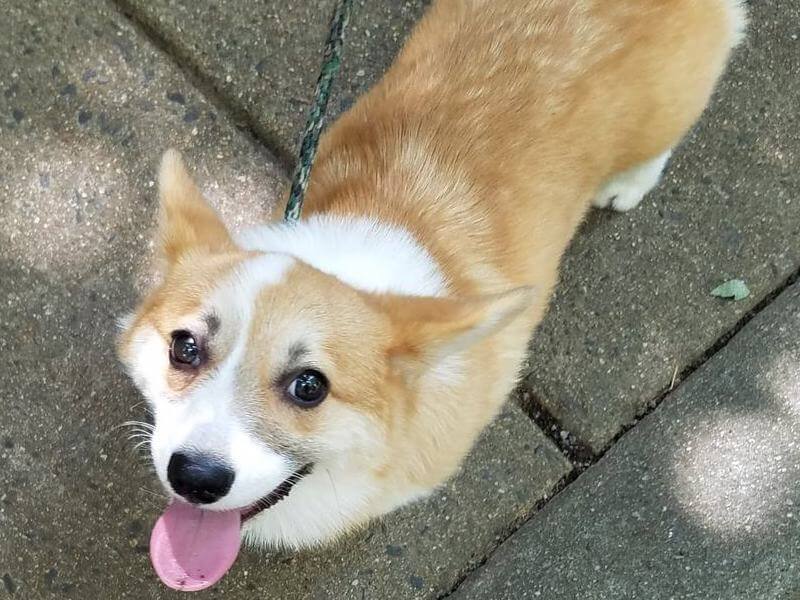
9 Tips to Properly Train Your Dog to Walk on a Leash
All dogs should be taught basic leash skills regardless of age, size, or lifestyle. As a dog owner, you should be able to easily take your dog out for a walk around the block or into a vet office without tripping over the dog leash or having your legs wrapped up. You’ll also want your pooch to walk nicely next to you without biting the leash or pulling you.
Dog leash training can be challenging. As dog owners ourselves, we’ve also been there. Along the way, we’ve learned many helpful techniques that we will share with you below. We understand how overwhelming it can be, which is why we provided a clear and easy-to-follow guide of 6 ways to train your dog to walk on a leash.
We hope that these methods make it easier for you to leash train your canine friends. You can use the various methods below or simply choose to focus on one each week. Please note that no single method works for all dogs. It is important to have proper leash skills to ensure safety for both you and your canine companion. Let’s dive in, shall we?
Table of Contents
1. Pick the Right Dog Collar and Dog Walking Leash
Before you start walking your dog on a leash, you’ll need to pick an appropriate dog walking collar or dog walking harness that properly fits your dog along with the right dog leash.
For instance, if you have small dogs like a Chihuahua, you’ll want to use a dog harness instead. For larger dogs, you can go with either a retractable dog leash or a rope dog leash. Whichever type of dog leash you end up using, make sure to introduce it to your puppy first. This way, they will get used to it and will feel comfortable with it.
You’ll also want to bring enough treats with you to reward your dog while leash training. If it’s helpful to you, you may want to get a training treat pouch. This way, you’ll be able to store the treats in the pouch instead of holding them constantly in your hand. You won’t be inconvenienced with having both hands occupied during training. Additionally, you’ll want to use a clicker or a marker for good behavior. An emphatic “yes!” works as well.
2. Basic Commands for Dog Leash Training
There are a few basic commands your four-legged friends should know before you start the leash training process. Two basic commands include “come” and “stay” when you want to teach your dog to walk properly on a leash.
“Come” means your dog should stop what he’s doing and come towards you. The “come” command is important when you want to prepare your pup for a walk when he or she is somewhere else in the house.
The “stay” command teaches your pooch to stand still for a short period of time, allowing you to put on the collar or harness and the leash before heading outside for a walk, crossing the street, or waiting for the walk sign.
3. Keep Sessions Short and Simple
Before any training, allow your pooch to get familiar and accustomed to their collar or harness. Start small and simple.
Any time your pup heads outside to the backyard, make sure to get into the habit of attaching the collar or harness onto your dog. Doing this and allowing your canine friends to wear the collar and leash for short periods of time while you are playing with them and offering treats will get your pups accustomed to it.
Little by little, your pooch will get used to the feeling of the collar and leash and start to associate it with food and fun.
If your puppy or adult dog has never been leash trained, it is best to begin with short, positive sessions. Training around the house should be fine. Later once the leash walking improves, the sessions can be longer and more difficult.
Please make sure the collar isn’t too tight around your dog’s neck as that can be uncomfortable and irritating.
4. Less Energy Before Leash Training
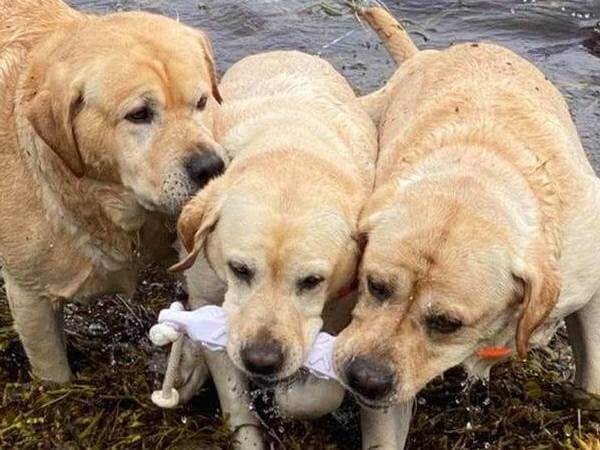
If you find a way to tire out your pooch before the leash training walk, you’ll find that dog leash training may be easier. Energetic dogs may have a tendency to pull so it is a good idea to expend some of that energy first prior to leash training.
Ways to expend that energy includes:
- Playing fetch with balls or frisbees in the backyard or dog park.
- Allowing your dogs to run freely around in the backyard.
- Swimming.
All of these activities will allow your four-legged friends to use up some of that pent-up energy.
If the pent-up energy isn’t expended, some dogs may resort to bad behaviors and habits. For instance, some dogs may bite the leash during leash training and walking. If this is the case, it is a good idea to get your furry friend some indestructible dog toys or dog bones.
Chewing on indestructible dog toys or dog bones satisfies their innate nature to chew without resorting to bad chewing behaviors. Unsurprisingly, chewing on dog bones can also tire a dog out so it is best to have them chew on the bones prior to the training session.
You may be interested in: Check out our reviews on the Best Dog Bones for your precious pooch!
5. Leash Training to Walk by Your Side
While walking, it’s important that your furry friends learn to stay by your side. Whichever side your pups stay on, keep it consistent and always stick to that side.
Traditionally, dogs walk on the left side of the owner. If you prefer that your dog walks on your right, that is fine as well. This also helps avoid tripping or injuring yourself or your dog. It’s not fun if your canine companion weaves back and forth constantly.
You’ll want to follow the following steps:
- Keep your dog’s leash short enough to prevent easily leaving your side, which models the walking position you want him to be in. However, don’t keep it so short that you’re dragging him.
- At the same time, lure him into the correct area and space by your side with some soft tiny treats. With a clicker or praise, you can mark his or her correct behavior.
- You can stop luring once your dog starts to get the idea and learns the correct walking habit. Do continue to reward them for staying by your side.
6. Treats and Rewards When Leash Training Your Dog
Plenty of treats and rewards are required when leash training your dog. Each time your canine companions master the leash walk even for just a few seconds, make sure to reward them with praise or a treat.
In the beginning, give a treat for every few steps and then gradually increase the distance you walk between treats until your pooch forms the habit of walking at your side without treats. Be sure that the treats are small and tender so your dog can eat them quickly and continue the leash training.
7. Gentle Leash Pressure
If your dog stops walking or won’t continue walking with you, you can apply gentle leash pressure. This will remind your K9 friends of your presence and control and make it a little bit unpleasant for them to ignore you.
Please avoid forcing or dragging your pups towards you. If your furry friends are behind you and begin to walk towards you, make sure to praise, reward, and release the leash pressure.
READ NEXT: What To Put On Rope Burn From Dog Leash?
8. Puppy Leash Training
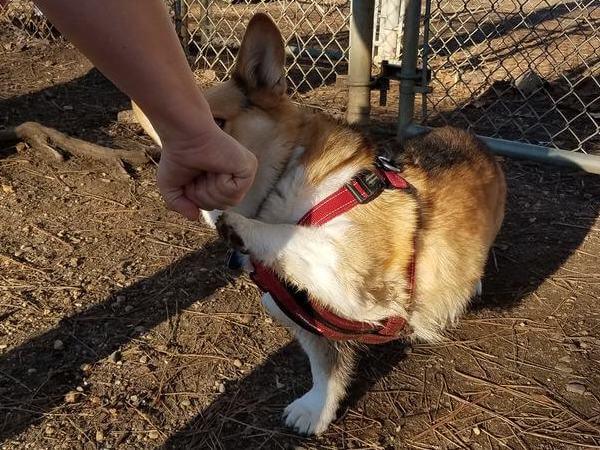
When you’re leash training your puppy, make sure to take baby steps. Start by attaching the leash while indoor and play with your puppy to keep him occupied and distracted from the leash before going out and leash walking.
To avoid irritation and discomfort, make sure the lease is loose enough. The next step would be to practice putting your puppy on a leash in your backyard. If you’re afraid that your little furry friends may run off and escape your backyard during leash training, you’ll want to make sure there is a fence to keep them safe.
It is important that your puppy slowly becomes familiar with leash training, both indoors and outdoors. With consistent practice, your K9 pups won’t notice the leash anymore and you can increase the length of your walks with them.
You may be interested in: Some owners prefer to use a wireless dog fence. Check out our reviews on the Best Wireless Dog Fences for your escape artists!
9. Be Patient
Time, patience, and effort are all required during dog leash training. It is best to stay calm and patient. Always take your time and stay calm and collected, but also be persistent during the leash training.
Even if it’s a small achievement, praise and treat because these small steps add up over time. Through persistent leash training, your four-legged family members will accept the leash and will eventually walk properly on it.
The Zuke’s Puppy Naturals Dog Treats are soft and small, which makes them great for puppy training. Each bite is wholesome and tender and will make your training much easier since your puppy will want more of it.
The small treat size allows your K9 pooch to focus on the training instead of focusing on chewing the food. Thus, the treat is a great supplement to the training without distracting your furry friends from the training.
The treats have EPA and DHA which support healthy brain function and development. Best of all, it is gluten-free and grain-free. No matter which flavor you choose for your puppy or adult dog, each of them is made of real and delicious ingredients.
Zuke’s Puppy Naturals Dog Treats Key Features:
- Comes in various flavors: Lamb, Pork, Salmon.
- Comes in 3 different sizes: 5 oz, 6 oz, and 16 oz pouch
- Made of real ingredients.
- Filled with nutrients.
- Contains EPA and DHA for healthy brain functions.
- Wholesome, small, and tender bites.
- Gluten-free and grain-free.
Zukes Dog Treats Reviews:
Pros
- Many owners said their dogs loved all the flavors of Zuke’s Mini Naturals and were happy with the small size of the treat during training.
- Owners noted that these treats are great for dog training and teaching their puppies tricks.
- The majority of the customers’ dogs love and are crazy about these treats. The owners recall every time they hand out the treats, their dogs and puppy get very excited.
- Almost every positive review said they love how these quality training treats are made of natural ingredients and that there are no artificial colors or flavors.
Cons
- While some customers noted how strong the treats smell, they did point out that this powerful scent makes them a strong food lure during training and a rewarding, healthy treat for their dogs.
- A few customers pointed out that if you leave the treats out on a table for a while, the treats will easily dry out. If you aren’t careful and the treat bag isn’t sealed properly, the entire bag can dry out in days.
The PetSafe Treat Pouch provides pet owners with the convenience of storing dog treats during training sessions or out for a walk. The dog treat bag comes with multiple dividers to separate multiple treats and offers dog owners an easy way to grab treats and reward their dogs. There’s also a front pocket where owners can put in their keys and phones. A detachable belt and belt clip are included with the pouch.
PetSafe Treat Pouch Key Highlights:
- The pouch comes with multiple clips and loops to attach whistles or poop bags.
- Versatile pouch with a front pocket for keys and phone
- The pouch is waterproof, machine washable, and stain-resistant
- Ability to store multiple different treats with the help of divided inner pockets
- The hinged opening provides convenience. The opening stays open and closes with a touch
What customers are saying:
Pros
- One customer who is raising future Service Dog puppies for Service Dog organizations praised the pouch for bringing convenience to her everyday training sessions.
- Many owners said the hinge and closing features are great. It eliminates dogs that nose dive into the treats and the hinge is long-lasting.
- Owners love that the pouch has large pockets with dividers, which allows them to separate the low and high-value treats. The pouch size is also perfect for them.
- A lot of the owners love the front pocket feature that allows them to put their phone and keys inside.
Cons
- A few customers said it was a bit difficult for them to get the treat without having to fumble or look for the correct pocket, but that they will get used to it.
If you’re looking for a positive form of training with your dog, implementing clicker training is very useful. The Downtown Pet Supply Dog Clicker with Wrist Band ensures that you only hold the clicker when needed. When your dog accomplishes the commands, you can reach for the treats and drop the clicker and it will hang beautifully on your wrist. When you’ve finished training, you can wear the clicker on your wrist and not worry about losing it. The big button provides you easy clicking and the loud sound is great for training your dog.
Downtown Pet Supply Dog Clicker with Wrist Band Key Features:
- Comes in different bright colors: Red, pink, blue, black, and green
- Sturdy clickers come with a wrist strap
- Clicker fits in the palm of your hand and is comfortable
- Big button provides easy clicking
- Loud sound for training
- Comes in 4 Pack, 5 Pack, 12 Pack, and 25 Pack
What customers are saying:
Pros
- Many owners love how the button is very easy to click and the sound is just right – not too loud and not too soft. The sound does not startle other pets in the house.
- Some happy owners noted that they would use the clicker whenever their dogs are distracted. Once their dogs hear the click, they immediately stop what they were doing and paid attention to the owners.
- Owners mentioned that the clicker works beautifully and gave them immediate positive results.
- The majority of the owners said they were happy with the clicker’s functionality as well as the bright colors.
Cons
- Some customers said the clicker wasn’t as loud as they had expected.
Related Questions
There are several steps you can take to get your dog to stop pulling on the leash. First, make sure you’re using dog treats, whether during walking or leash training. Second, make sure the collar or harness isn’t too tight and the leash isn’t too short that it is pulling on your dogs. Third, be sure you’re using the right equipment. Sometimes, your pooch may get distracted by squirrels during walks and starts pulling on the leash. If this is the case, turn them away from distraction.
If this is regarding regular dog walks since you have trained your pooch to walk on the leash, it may be a good idea to use a retractable dog leash because it gives your dog more space and room to walk and explore.
If you have a grown dog, you can still train him or her to walk on a leash. Here’s what you can do:
While holding the leash firmly, allow your dogs to walk until they have used up the loose leash. In a firm voice, say, “heel.” When he pulls, give the “heel” command again and gently pull the leash. Be sure to stand still and firm.
This will show your pups that you are in control and that they should listen to you. Once they get this message, they will walk back to your side.
Resources:
https://www.ncbi.nlm.nih.gov/pmc/articles/PMC7132425/
https://en.wikipedia.org/wiki/Leash
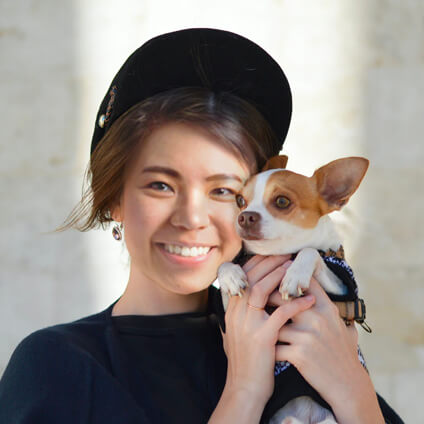
With over five years of specialized experience as an animal writer, my expertise lies in dog nutrition, health, behavior, grooming, and training. I am dedicated to delivering helpful and informative content that caters to the well-being of our furry friends. My primary goal is to empower pet owners with knowledge and ensure our canine companions thrive in health and happiness. In my free time, I love volunteering at local dog rescue centers.
